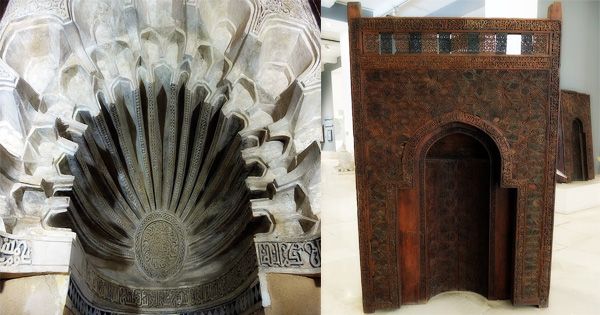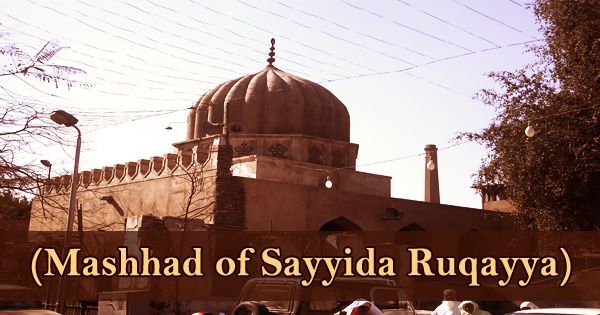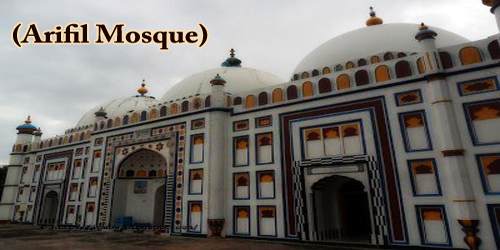The Mashhad of Sayyidah Ruqayyah (Arabic: مـشـهـد الـسـيـدة رقـيـة, romanized: Mashhad al-Sayyidah Ruqayyah), a mashhad ru’ya (visual memorial) of an ‘Alid saint, is dated to 1133/527 AH by an inscription. It is also referred to as a 12th-century Islamic religious shrine and mosque in Cairo, Egypt, as the Mausoleum or Tomb of Sayyida Ruqayya. It is also noteworthy as one of the few and most significant mausoleums of the Fatimid period remaining today in Cairo. Ibn Abi Talib’s daughter, the fourth Righteously Driven Caliph (Rashidun), was Sayyida Ruqayya. Ruqayya came to Cairo with Zaynab, her stepsister. These women are historically considered the patron saints of the region, along with Sayyida Nafisa. Still used as an oratory, Ruqayya’s shrine is a place where people make vows and pray for the intercession of the saint. There are already miraculous interventions credited to her. It is believed in Pakistan that Bibi Pak Daman (Urdu: بی بی پاکدامن Bībī Pāk Dāman) is the Ruqayyah bint Ali mausoleum, located in Lahore, Punjab, Pakistan. Among other items, the Mashhad is noted for its central mihrab, one of Egypt’s finest pieces of stucco decoration. It contains a niche surmounted by a shell surrounded in turn by an outer scalloped lip, the ribs of which radiate in a manner from a medallion reminiscent of the niches decorating the al-Aqmar Mosque’s facade. With all four sides measuring 12 m, the largest, middle section is square in plan, and it is covered by a dome. By means of two entrances with horizontal lintels, it opens out to two side bays that are rectangular in form. The mausoleum is situated along a road that leads through the area of al-Khalifa (also known as the Sayyida Nafisa Cemetery), which is part of Cairo’s larger Qarafa Necropolis. In addition to its religious importance, since it is one of the few well-preserved Fatimid buildings of its kind and reflects some significant developments in Cairo’s architectural evolution, the Mashhad is important from an architectural history perspective.

The central mihrab, carved in stucco, and The wooden mihrab (dating from 1154-60)
In the middle part, the transition zone from the square to the drum of the dome is one of the most significant and distinctive features of this monument. A Kufic script inscription band containing Qur’anic verses is located around the drum of the dome. The transition is rendered by a row of small keel-arched niches resembling muqarnas, a mechanism that reflects a transformation in dome architecture design and layout, in which the transition zone had previously consisted of wide keel-arched openings in the square’s corners. The Mashhad is still used today as a mosque or oratory, where religious teaching takes place and people come to pray for the intercession of the saint. The transition zone in the mashhad consists of a two-tiered squinch to form a muqarnas, or stalactite squinch, subdivided into keel-arch niches. A trefoil window perforates the space between the squinches, the outline of which is similar to that of the squinch, and is subdivided into three keel-arched openings by means of a central Y-shaped structure, thus mimicking the subdivision of the squinch into three niches surmounted by a fourth one. The room is occupied inside the mausoleum by the shrine and cenotaph, but three more mihrabs are of great architectural significance. The central mihrab is an extremely fine decorative stucco work. The overall design of the mihrab is reminiscent of the main portal of the Aqmar Mosque of the Fatimid period, but it is further evolved and is arguably a continuation of this design. A medallion that bears the name “Ali” is at the center of the niche, surrounded by five variations of the name “Muhammad” connected together. A pair of lobed windows with stucco grilles comprising geometric forms exhibits each face of the octagonal drum above the transitional zone. The Mashhad additionally housed a detached wooden mihrab which is viewed as probably the best case of its sort from the Fatimid time frame. The mihrab is presently in plain view at the Museum of Islamic Art in Cairo. The arch from the outside is lobed fit as a fiddle.
















